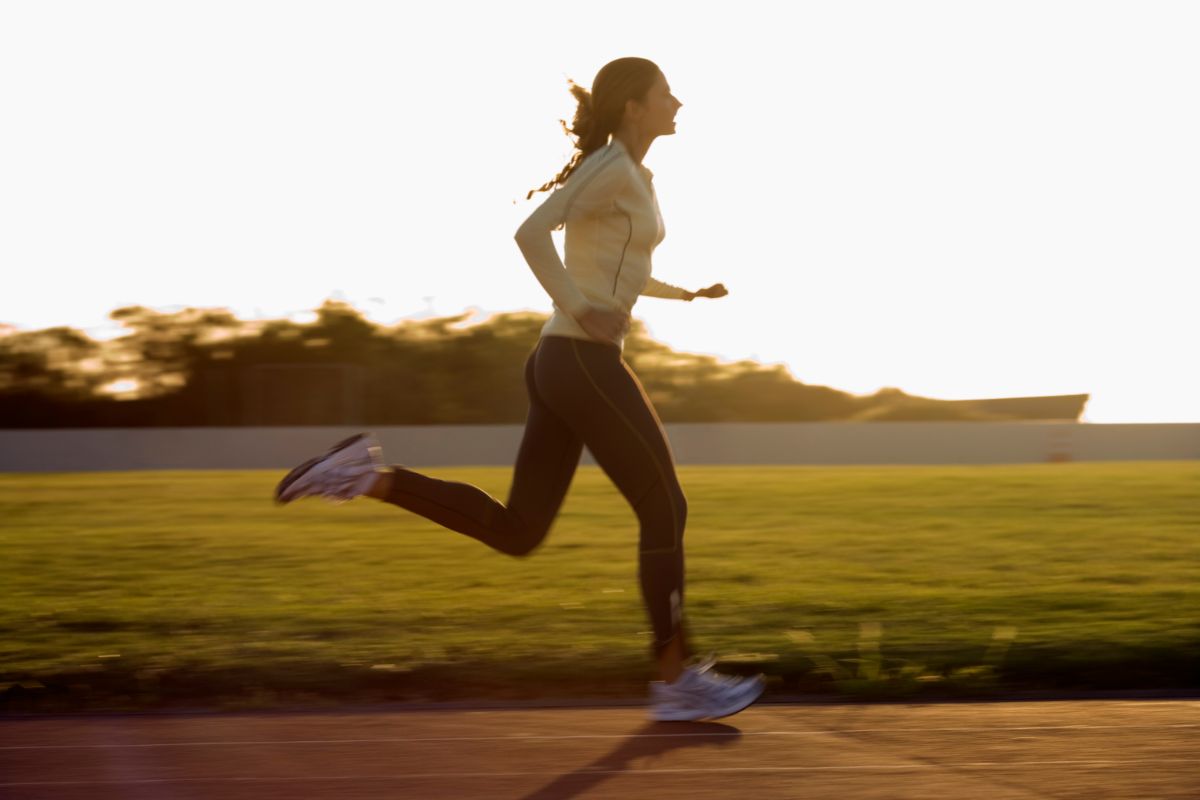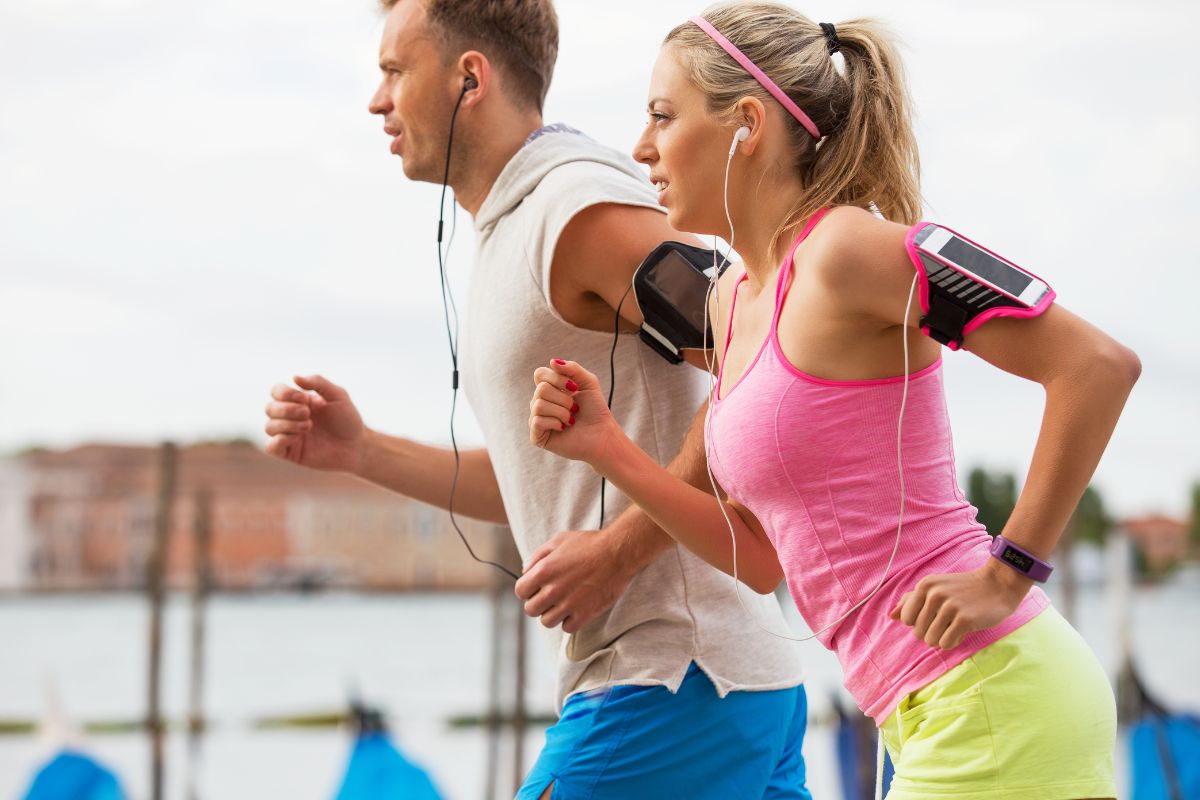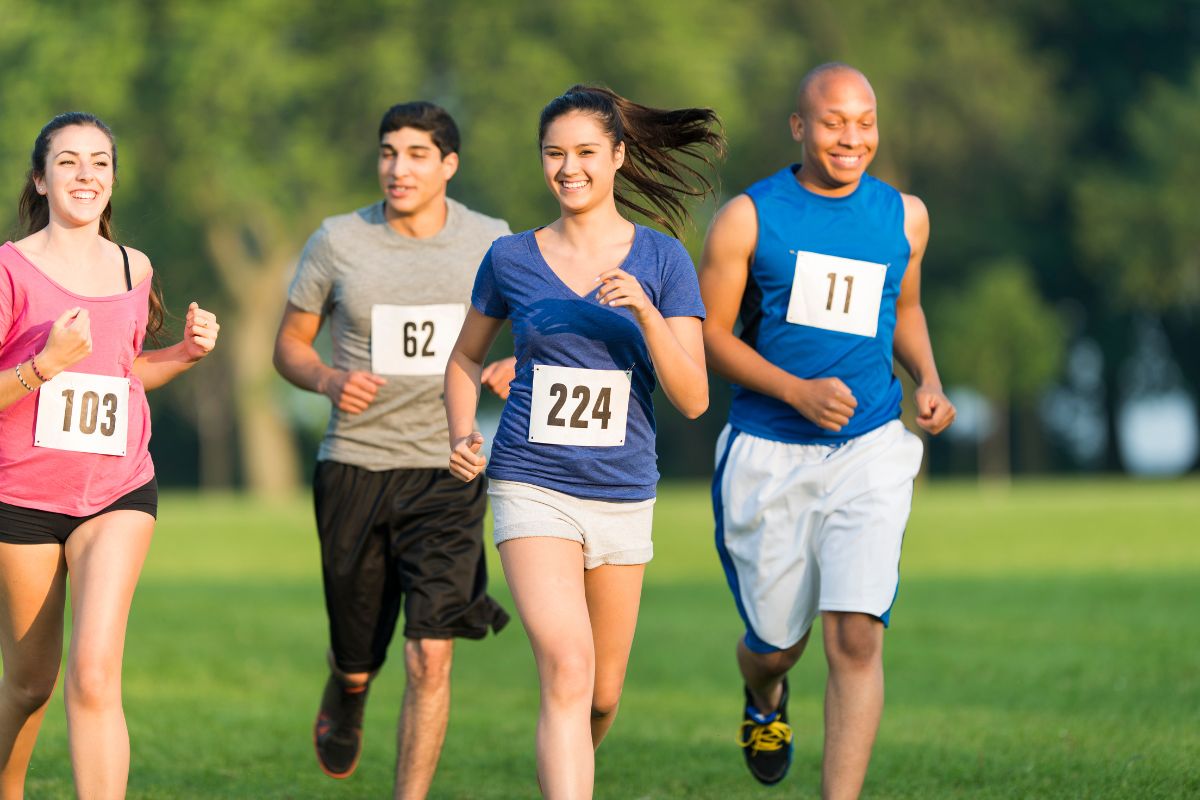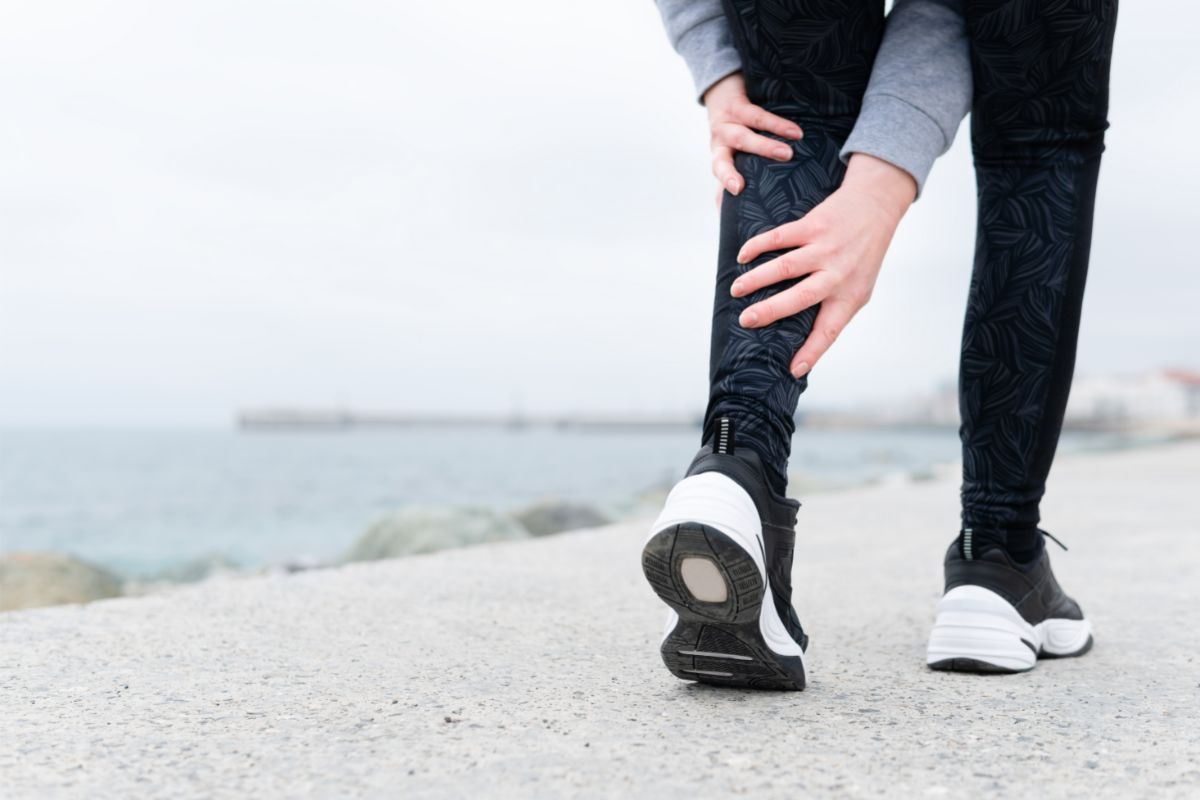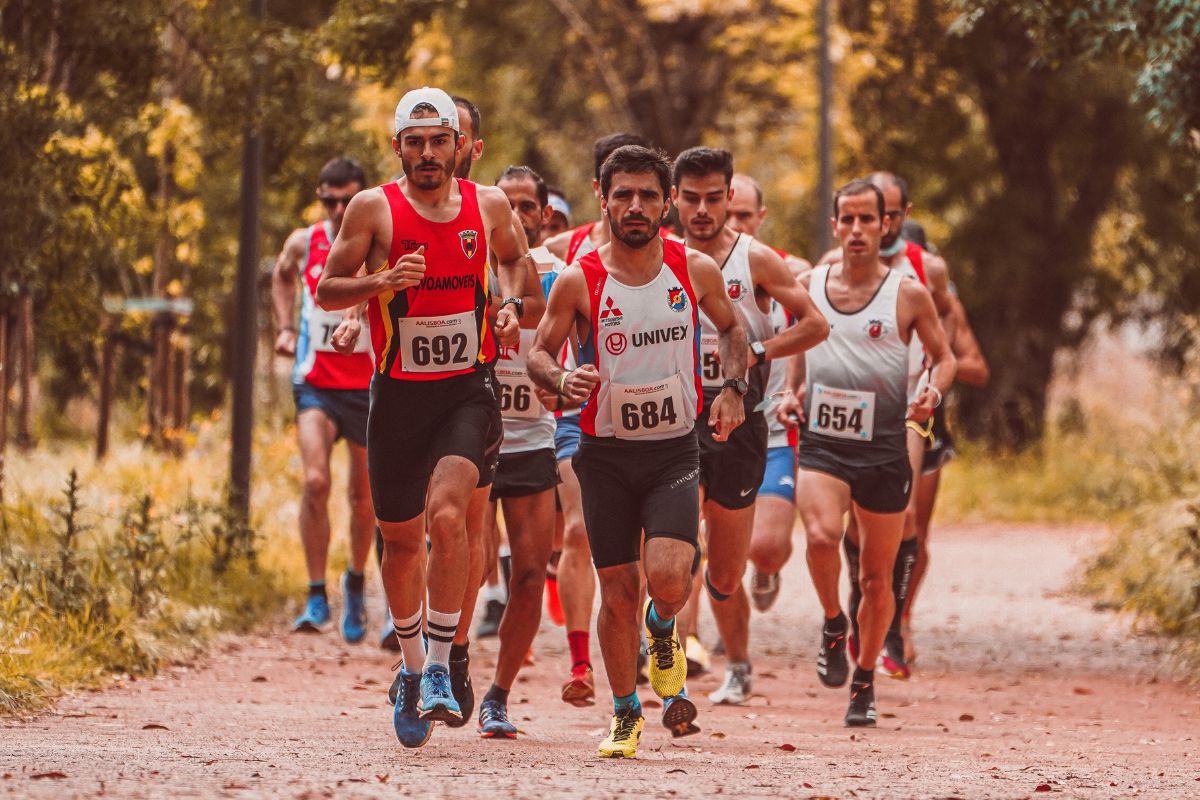While we watch most athletes compete and believe they are where they are because they were born with something different from the rest of us, the truth is often very different.
In reality, your favorite athletes simply have great determination, motivation, work rate, and high-quality coaching. This can clearly be seen with sprinters.
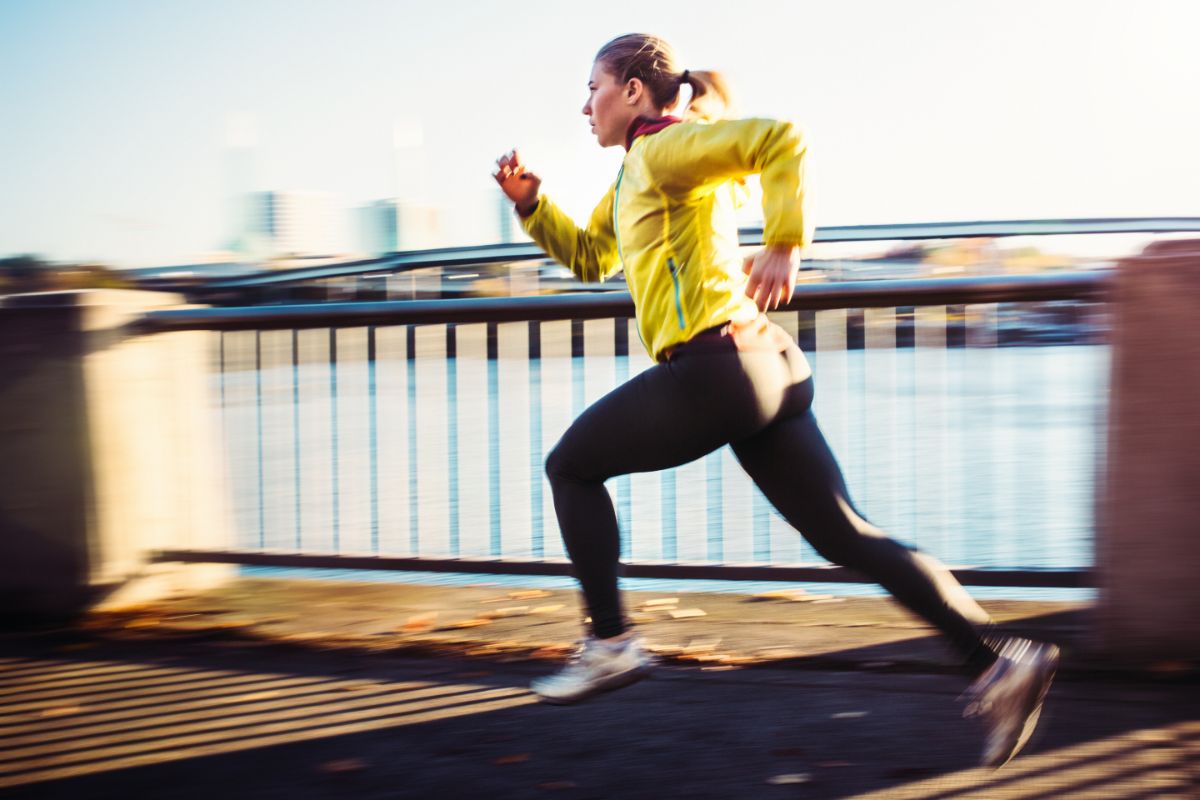
Of course, sprinters have to work very hard and sacrifice a lot in order to be successful, but anyone can develop and increase their sprint.
This is because sprint speed can be taught. Through the teaching of correct techniques, you can learn to run faster and also reduce the risk of any injuries by avoiding any bad sprinting mechanisms.
An athlete’s genetics might help them run faster than you, but if correct techniques are never taught, they’ll never reach their full potential.
Today, we’ll provide you with everything you need to develop your sprinting technique. Whilst we’ll focus mainly on 100m sprints, the information we provide can be applied to most forms of sprinting.
Without further ado, let’s get to it!
Accelerative Sprinting
Let’s start with accelerative sprinting. When you accelerate, force production is required in order to generate speed as your foot makes contact with the ground.
The more force you apply when making contact with the ground, the larger the return of impulse production, which in turn increases your overall speed.
A longer food-to-ground contact time allows for more impulse production and greater force generation.
Having said that, if you want to cover the ground quickly, you need to limit the time your foot has contact with the ground with each stride.
With this in mind, it is essential to apply an optimal amount of force when making contact with the ground, in the limited amount of time contact is made.
When you accelerate, you have to think about the point at which foot-to-ground contact is made in relation to your body’s center of mass. Contact time can be kept to a minimum by keeping the contact behind the center of mass.
This is why sprinters drive low out of the blocks. It is also important not to overextend each stride as you won’t be able to produce as much force.
Maximum Velocity Sprinting
Like acceleration sprinting, a shorter contact time with the ground is also associated with increased speed throughout maximum velocity.
It is important to note, however, that maximum velocity can only last for short periods of time. You will eventually start to decelerate. As a result, it is important to do all you can to maintain the best sprinting form.
During contact with the ground, being able to apply optimal forces (vertical) generates an increased force impulse. This increase is enough to counteract gravity faster.
Along with good form, this gives sprinters the ability to increase stride frequency whilst not impacting stride length.
While it may be beneficial to keep a foot behind the center of mass when accelerating, when it comes to maximum velocity, it is only a benefit to a certain point.
After that, it starts to become detrimental to your performance, increasing deceleration and negatively impacting the stride cycle.
Stride Cycle
Your stride cycle starts at something we call the touchdown phase. The braking effect causes the body to slow down and lose momentum when the point of touchdown is met.
To put it simply, this is where your foot makes initial contact with the ground. The contact time with the ground we have mentioned previously starts here.
The contact time ends after a phase called toe-off. This is where a force is produced when you push off the surface you’re running on.
This leads us nicely to the flight phase. This is the part of the sprinting technique where no part of either foot is in contact with the running surface. When your rear leg becomes your lead leg, the second touchdown phase begins.
This whole process is just one complete stride. The process is then repeated time and time again until the race has finished. Mastering an effective stride cycle is essential if you’re going to develop an improved sprint speed.
What Affects Your Sprinting Technique?
Posture
The correct posture is easily one of the most important things when it comes to increasing sprint speed. In fact, a good posture is critical for any sprint.
There are a lot of athletes that accidentally lean too far forward when sprinting. This is caused by over-flexing of the hip. This slows the athlete down and negatively alters sprinting mechanisms.

Instead, your posture should be slightly tilted. To improve your sprinting posture, the best thing you can do is perform strict sprinting drills with good form. This will transfer the perfect form into your sprinting technique, allowing you to run faster.
Another great way to improve posture is to perform regular back extensions. These improve general fitness and strength in your back.
Relaxation
It is important to stay relaxed when sprinting. If you’re not relaxed, your body will tense up, making you work a lot harder than you need to.
You will run faster, but you’ll quickly tire. Over-tensing occurs when an athlete tries too hard to exert power and generate force.
This typically causes the body to stiffen and waste valuable energy. Your form will suffer massively as you quickly decelerate. You could even injure yourself.
To ensure your body doesn’t over-tense, relax your body and stay calm. This will lead to a much smoother sprint.
Stride Length
You need to be careful when you open your stride to increase the length of the ground covered. Over-striding will reduce the amount of power you generate when making contact with the ground. This will increase how quickly you decelerate.
Over-striding also brings an increased risk of injuries as hamstring muscles are put under a lot more strain.
To avoid this, try to complete each stride with a circular motion. You should try and aim to keep your knees parallel with the floor.
Arm Movement
An athlete’s arms also play a key part in regard to sprinting faster. Arms help propel the athlete’s legs, which is why speed increases.
The correct motion to follow with your arms is “elbow to the sky, thumb to the eye”.
Fluidity when moving your arms can be maintained by staying calm and relaxed.
Sprint Starts
Mastering your sprint starts is a sure-fire way to reach your top sprinting speed. It is arguably the most important part of any sprint.
The best way to improve your sprint starts is simply to practice them time and time again until you’re totally comfortable with the blocks.
Sprinting Technique Checklist
If you want to reach your top speed, make sure you remember the following things.
Head
- Keep your head and spine in line
- Relax your jaw and neck muscles
- Avoid clenching your teeth
- Keep your focus down the track
Shoulders
- Avoid shrugging your shoulders
Arms And Hands
- Keep your arms and legs in sync
- “Elbow to the sky, thumb to the eye”
- Keep your palms open
Torso
- Stay upright when at maximum velocity
Lower Body
- Always run on the balls of your feet
- Push off using your toes
- Focus on your rapid turnover of sprint cycles
- Keep each stride long, yet comfortable
Final Thoughts
Sprint speed can be taught. With effective coaching, plenty of practice, and dedication, you can develop and improve an effective sprinting technique that allows you to reach your full potential.
In this post, we’ve talked you through the most important things that make an effective sprint. We’ve looked at each technique and provided you with plenty of pointers that will help you increase your speed.
With all of this information at your fingertips, start to work on your sprint technique and see how much you can improve.
- Can Dogs Run Faster Than Humans? (Running With Your Furry Friend) - October 4, 2022
- 10 Doggie Fun Runs You Will Love [Ultimate Guide] - October 4, 2022
- What Are Division Results In Running? - October 4, 2022



